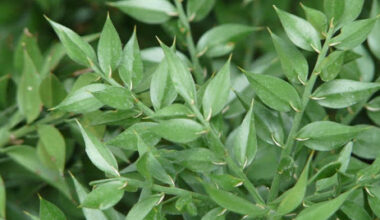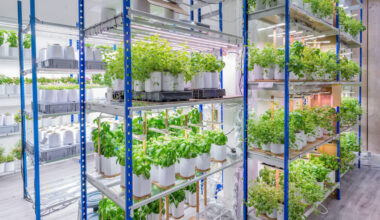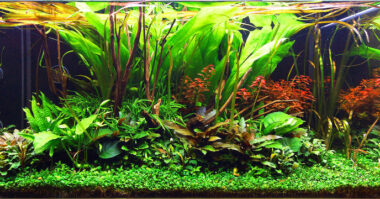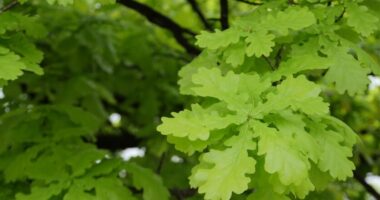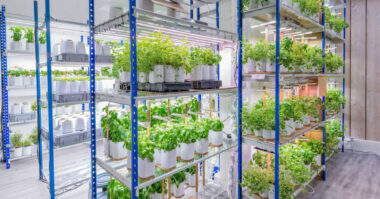Plants cannot live indefinitely, however, some of them have a long life, on our scale.
Not all plants have the same life expectancy, whether they are perennial or perennial, annual or biennial. And even within perennials, some live only three or four years at the most, while others can survive for decades and even break longevity records.
An annual plant does not live more than one year. Its life cycle, from germination to seed production, takes only a few months. While the life cycle of a biennial plant takes place over 2 years.
Contents
Are plants eternal?
No, plants are living beings, just like us, we cannot live forever. However, there is one plant that is known to be “immortal”, it is the rose of Jericho:
The rose of Jericho, Selaginella lepidophylla, is a surprising little plant that has developed a strategy to resist drought. When it is dry, it goes into dormancy: it closes up, takes the shape of a ball, and appears dead. But, as soon as it is rehydrated, it unfolds completely and regains colors, like a blooming flower! It gives the impression of being dead, then to be reborn as soon as it is in contact with water, which is why it is called “Plant of the Resurrection”.
It grows spontaneously in the Chihuahua desert, on the border between Mexico and the United States. This explains its adaptation to drought.
The rose of Jericho is very close to ferns! It produces neither flowers nor seeds, but spores. It takes the shape of a flattened rosette, with branches that start from the center and radiate outward. It does not bear real leaves, but small scales.
Life span of annual plants
Annual plants complete their complete vegetative cycle in a single season. They therefore produce their flowers, fruits and seeds in the year of sowing and then they will dry out and die.
However, they do not necessarily disappear, since some of the seeds that fall to the ground will germinate the following year, which is called spontaneous sowing.
Lettuce, annual plant
- in May : sowing
- July-August: harvest
- September: uprooting of the dried-up feet that have died; or development of a few stems that will go to seed
- April: small lettuce seedlings will develop spontaneously from lettuce seeds left on the ground.
Other annual plants: basil, beans, sweet peas, begonia, petunia, poppy, cosmos, belle de jour…
Life span of biennial plants
Biennial plants need two years to flower and bear fruit before they die, knowing that in the first year they produce only leaves.
During year 1, the plant develops and stores reserves, then in year 2, it will develop one or more aerial stems, with or without leaves, which will flower before giving seeds.
Carrot, biennial plant
- in March : sowing in the ground
- in July: harvesting of carrots (the reserves)
- in autumn, the stem of the unharvested carrot stalk wilts.
- the following spring, it grows back
- the following summer, it blooms and gives seeds.
Some biennial vegetables such as carrots or beets are “grown as annuals” since they are harvested in the first year.
The raised bed allows plants to go to seed the following year only if he wants to collect seeds to make new seedlings.
Other biennial plants: beet, parsnip, parsley, pansy, forget-me-not…
Life span of perennial plants
Perennials live long, they flower every year for the most part. Their flowering and seed production does not lead to their death since they are perennial. It is necessary to distinguish :
- Ephemeral perennials: these are the most timid, they are treated as annuals or biennials, so they are pulled up at the end of their flowering when the frost has wiped them out (Foxglove, Thunbergia…).
- Herbaceous perennials: these perennial plants wither when autumn arrives, remain at rest during the winter thanks to their survival organ (bulb, rhizome, tuber …), then reappear in spring. They multiply by the seeds they produce or by asexual reproduction resulting from fragmentation (cutting, division …).
- Woody perennials: these are trees and shrubs that lose their leaves, overwinter but do not die and resume their growth in spring, as soon as the good weather arrives.
Some perennial plants: asparagus, cardoon, mint, strawberry, periwinkle, valerian, iris, daisy, lily of the valley, lily of the valley, tulip, dahlia …
What is the lifespan of a plant?
Perennials live more than two years, but they do not all have the same life expectancy. Indeed, they go into dormancy in winter (allowing them to withstand adverse weather conditions) to resume their growth the following spring.
But they wear out over the years and sometimes disappear without warning. A perennial can live a certain number of years (up to 60 years or more) without the intervention of the raised bed, depending on the species and in optimal growing conditions.
Among the perennials, we distinguish :
- short-lived perennials (3 to 5 years)
Some perennial plants have a rather short life expectancy. Contrary to biennials, they have the capacity to bloom several years before disappearing. This is the case of perennial foxgloves, toadflax, columbines or even verbena hasta or Buenos Aires.
With a few exceptions (Example: Digitalis ‘Glory of Roundway’ is sterile. It does not produce seeds, the multiplication is done by division only), these plants are resown alone if conditions allow it. However, it is possible and even advisable to collect the seeds, to divide or cut these plants in order to keep them in the garden.
- medium-lived perennials (5 to 20 years)
These perennials come back every year for at least 5 years. This concerns astilbes, monards, delphiniums, lamium or rudbeckia.
- long-lived perennials (from 20 years and +)
These perennial plants have a great longevity. This is the case of daylilies, hostas, peonies, alchemilla, bergenias or even elf flowers.
Summary
Plants are attached to the soil by their roots, which supply them with water and mineral elements, while their leaves capture solar energy to fix carbon dioxide. These essential processes of terrestrial life are therefore carried out by immobile organisms.
Plants must therefore be able to adapt to the contrasting and fluctuating conditions of their environment, without the possibility of finding a more favourable habitat than movement would allow, as is the case with animals.

